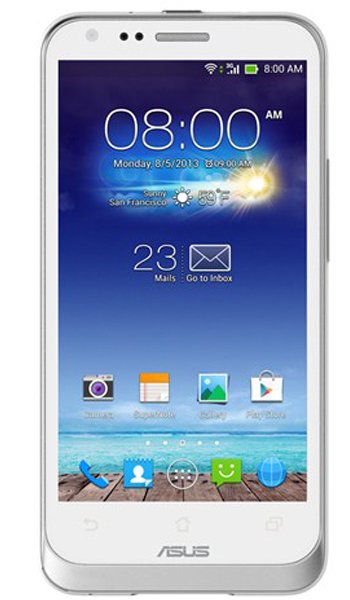Huawei Y9 (2018) vs Asus PadFone E Comparison and Differences
Smartphone 1
-473.jpg)
Huawei Y9 (2018)
Smartphone 2

Asus PadFone E
Smartphone 3
Huawei Y9 (2018) or Asus PadFone E Specs Comparison
or
 Common specs
Common specs
| Brand and model | Huawei Y9 (2018) | Asus PadFone E | |
| Rating | (+) | (+) | |
| Release date | 2018, March | 2014, January | |
| Dimensions (HxWxD) | 157.2 x 75.3 x 7.9 mm | 6.19 x 6.19 x 2.96 in | 139.6 x 69.7 x 9.1 mm | 5.5 x 5.5 x 2.74 in | |
| Weight | 170 g | 6 oz | 126 g | 4.44 oz | |
| Body Build | Front glass, aluminum body | ||
| Case | buy from Amazon | buy from Amazon | |
| Colors | Black, Gold, Blue | Black, White | |
| Battery | 4000 mAh, Non-removable Li-Ion | 1820 mAh, Non-removable Li-Ion | |
| Battery life |
Stand by time - Up to 270 h (2G) / Up to 330 h (3G) Talking time - Up to 27 h (2G) / Up to 15 h (3G) |
||
| Approximate price | 220 EUR | 260 EUR | |
| Check price | from Amazon | from Amazon |
 Screen
Screen
| Technology | IPS LCD | Super IPS LCD | |
| Touchscreen | capacitive touchscreen | capacitive touchscreen | |
| Display colors | 16M | 16M | |
| Screen size | 5.93" in | 4.7" in | |
| Screen area | 90.7 cm2 | 60.9 cm2 | |
| Screen format | 18:9 (height:width) | 16:9 (height:width) | |
| Screen to body ratio | 76.7% | 62.6% | |
| Screen resolution | 1080 x 2160 px | 720 x 1280 px | |
| Screen PPI /points per inch/ | 407 PPI | 312 PPI | |
| Screen protection | Corning Gorilla Glass | ||
| Screen protector | buy from Amazon | buy from Amazon |
 Camera and Video
Camera and Video
| Rear camera, main | 16 MP, Dual | 13 MP, Single | |
| Camera specs | -16 MP, f/2.2, 27mm (wide), PDAF -2 MP, depth sensor |
-13 MP, AF | |
| Functions | LED flash, panorama, HDR | LED flash | |
| Video | 1080p@30fps | 1080p@30fps, 720p@60fps | |
| Front camera, selfie | 13 MP, Dual | 1.2 MP, Single | |
| Specifications | 13 MP, f/2.0, 26mm (wide) 2 MP, depth sensor |
1.2 MP | |
| Video | 1080p@30fps | 720p |
 Performance
Performance
| Operating system - OS | Android 8.0 (Oreo); EMUI 8 | Android 4.3 (Jelly Bean) | |
| Chipset | - HiSilicon Kirin 659 (16 nm) | - Qualcomm Snapdragon 400 (28 nm) | |
| CPU | - Octa-core (4x2.36 GHz Cortex-A53 & 4x1.7 GHz Cortex-A53) | - Quad-core 1.4 GHz Cortex-A7 | |
| GPU | Mali-T830 MP2 | Adreno 305 | |
| External memory | microSD, up to 256 GB (dedicated slot) | microSD, up to 64 GB (dedicated slot) | |
| Internal memory | 64/128 GB, 4 GB RAM 32 GB, 3 GB RAM | 1 GB RAM |
 Benchmark
Benchmark
| Antutu 7 Total |
 Communication and Connectivity
Communication and Connectivity
| SIM card | Dual SIM (Nano-SIM, dual stand-by) | Dual SIM (dual stand-by) | |
| Network | GSM / HSPA / LTE | GSM / HSPA | |
| Bands | -2G - GSM 850 / 900 / 1800 / 1900 - SIM 1 & SIM 2 -3G - HSDPA 850 / 900 / 1900 / 2100 -4G - LTE |
-2G - GSM 850 / 900 / 1800 / 1900 |
|
| Speed | HSPA 42.2/5.76 Mbps, LTE-A (2CA) Cat6 300/50 Mbps | HSPA | |
| GPRS | Yes | Yes | |
| Edge | Yes | Yes | |
| Wi-Fi | Wi-Fi 802.11 b/g/n, Wi-Fi Direct, hotspot | Wi-Fi 802.11 b/g/n | |
| GPS | Yes, with A-GPS, GLONASS, BDS | Yes, with A-GPS, GLONASS | |
| NFC | |||
| USB | microUSB 2.0 | microUSB 2.0 | |
| Bluetooth | 4.2, A2DP, LE, aptX | 4.0, A2DP |
 Music and Audio
Music and Audio
| Radio | FM radio | No | |
| Headphone jack | Yes | Yes | |
| Others | - Active noise cancellation with dedicated mic | - Active noise cancellation with dedicated mic |
 Other features
Other features
| Sensors | - Fingerprint (rear-mounted), accelerometer, gyro (market dependent), proximity, compass | - Accelerometer, proximity, compass | |
| Other extras |
- Padfone Station with 10.1 inches Super IPS display, 1280 x 720 pixels, 181.5 x 263.6 x 17.4 mm, 525.7 g, 5000 mAh battery. |
||
| Versions |
- Also known as Huawei Enjoy 8 Plus in China |
Reviews and Opinions on Huawei Y9 (2018) and Asus PadFone E
If you had to recommend one of these phones to a friend, which one would it be and why? Share your arguments using the Add Opinion button!
